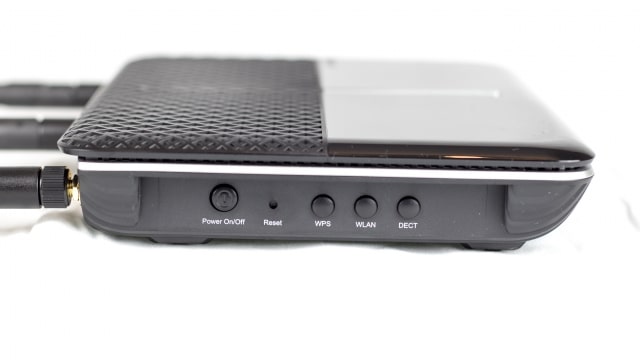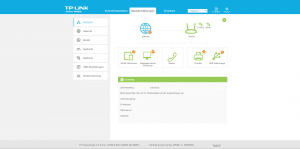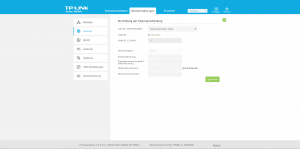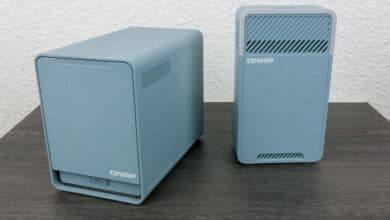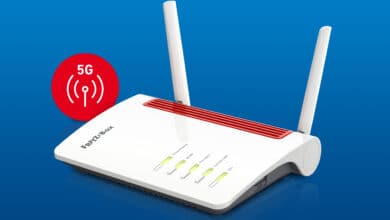
The TP-Link Archer VR600v is a practical, cost-effective complete solution for the home network. We were particularly impressed by the TP-Link Archer VR600v with its possible WLAN-AC speeds, which can reach up to 1600 Mbit per second. High speed is provided by 4 Gigabit ports and the included Vectoring-enabled VDSL modem. The Archer VR600v can therefore also replace a FRITZ! box on the DSL connection, because analogue and DECT telephones can also be connected. In general, the device can also be used with any Internet service provider.
In our test the model TP-Link Archer VR600v works well, there were only minor weaknesses. These were reflected in a slight increase in energy consumption. Also the USB transfer speed leaves a little to be desired. All in all, however, we can speak of good data transmission. The same applies to device and WLAN security.
Technical data
each
| Product | TP-Link Archer VR600v Router |
| Antenna | External |
| Number of antennas | 3 |
| Dual Band Mode | simultaneous |
| Filter | MAC |
| Suitable for | Entertainment, Internet telephony, HD video streaming, Online Games |
| Included modems | ADSL, VDSL |
| LAN Ports | 3x RJ-45 |
| LAN Standard | Gigabit Ethernet (10/100/1000 Mbit/s) |
| Maximum download speed | 100 Mbit/s |
| Maximum WLAN data transfer rate | 1600 Mbit/s |
| Physical buttons | DECT, Power, WLAN, WPS, Reset |
| Remote management protocols | CLI, SNMP, SSL, Web Interface |
| Routing | NAT |
| Status display | LED |
| Telephony | VoIP |
| USB ports | printer, hard disk, USB modem, stick |
| Transmission standards | ADSL2+, VDSL2 Vectoring |
| Encryption | WEP, WPS, WPA, WPA2 |
| Existing interfaces | Je 1x RJ-11 WAN and RJ-45 WAN/LAN;
2x USB 2.0, TAE (analog phone), RJ-11 (phone) |
| WLAN frequency bands | 2.4 GHz, 5.0 GHz |
| WLAN Standards | a, ac, b, g, n |
In addition to the TP-Link Archer VR600v, all cables and adapters necessary for commissioning are included in the scope of delivery. This also includes a TAE/RJ-45 adapter, which is necessary for the telephone system. Only a quick start guide could be found. For a complete manual it is necessary to visit the manufacturer’s website to download the user manual.
Hardware of the TP-Link Archer VR600v
TP-Link relies on a classic design for the VR600v. The router is all made of plastic, some with high-gloss elements. Thanks to the strong perforation of the matt plastic elements, air circulation is improved. The VR600v also needs this for its considerable performance. Theoretically, it can achieve up to 1600 Mbit/s via WLAN. Therefore there are three antennas on the backside of the Router. If necessary, these can be removed or exchanged for others.
As you can see on the pictures, the router scores with the possibility to connect two analog devices. In addition to two telephones, these can also be fax machines or answering machines. In addition, up to six cordless CAT-iq2.0 or DECT-capable telephones can also be registered on the telephone system, which can be used for Internet telephony.
The 4 Gigabit LAN ports provide the ultimate gaming and streaming experience on wired devices. These are 4 times faster than standard Ethernet. Thanks to the two USB 2.0 ports of the TP-Link Archer VR600v, files, music, photos and videos can be easily shared on external media and quickly on the network. A printer can also be connected and used in the network.
There are some physical buttons on the left side of the device. In detail, these are the on/off switch, the reset, WPS, WLAN and DECT button. Above the router additional LEDs are mounted, which shine discreetly.
Software of the TP-Link Archer VR600v
For the Archer VR600v, TP-Link sets to its default user interface. The rapidly reacting surface is subdivided into three areas. The assistant will help you with the initial setup. The areas “Basic settings” and “Advanced” follow.
Within the basic settings you will find all settings such as
- Internal equipment
- WLAN
- Setting up a guest network
- Telephony
- USB settings
- Password
In the “Advanced” area, additional settings can be made, for example, how which WLAN channel is to be used. This area is primarily reserved for experienced users.
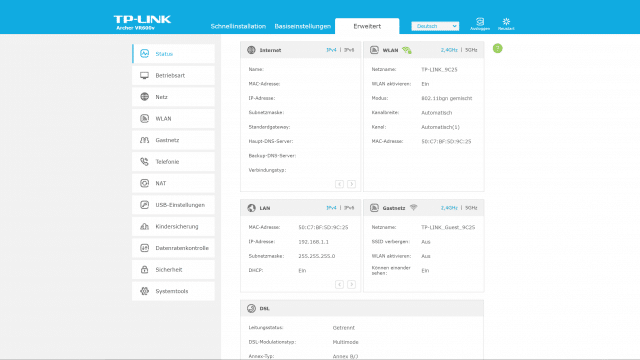
We are extremely satisfied with the range of functions. There are even apps for managing and telephoning from your smartphone over the landline. The user interface is clearly structured, but unfortunately not as user-friendly as that of a FRITZ! box. Visually, TP-Link can get even more out of this and make it clearer.
DSL support of Archer VR600v
The TP-Link Archer VR600v supports DSL with up to 100 Mbps. This means he can use almost any current DSL line. The performance of the router depends on your line.
Power consumption of the TP-Link Archer VR600v
As a WLAN router with an included modem, the Archer VR600v consumes slightly more energy than a simple router. In normal operation, it requires around 10.5 W with an active network connection and two WLAN clients. Under load the power consumption increases by a further 2 W. The same applies to the connection of an external hard disk.
Performance of the VR600v
Theoretically, the Archer VR600v on the 2.4 GHz band achieves a performance of up to 300 Mbps. On the 5 GHz band it even reaches up to 1300 Mbps. However, these are theoretical values. The actual transfer rate always depends on your client and the distance. If you only use a smartphone, most likely only 433 Mbit/s are supported. Computers and large gaming notebooks, however, equipped with a separate PCI-E WLAN card, can support 1300 Mbps.
WLAN of the Archer VR600v
The three WLAN antennas can be removed. Before first use, these are screwed onto the back of the device. This results in the advantage that you can mount the desired antennas with much more power.
We have to do without multi-user MIMO radio technology with the VR600v. MU-MIMO supplies several devices simultaneously with large amounts of data. But if you don’t play games with multiple devices or watch video streams all the time, you won’t miss MU-MIMO.
The WLAN range of the TP-Link Archer VR600v is decent, but not outstanding. This is comparable to the AVM FritzBox 7580. The VR600v supports beamforming technology. This is to avoid disturbances.
If you have visitors in the house, so you can activate a WLAN guest network both. This network has a separate name and its own password.
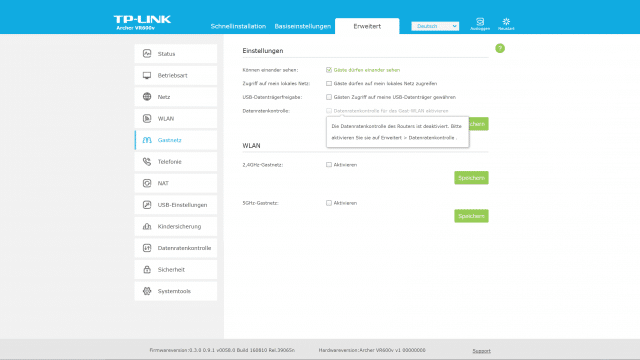
Conclusion of the TP-Link Archer VR600v
The TP-Link Archer VR600v offers a decent performance for its price difference of about 125 Euro. Compared to large WLAN routers, however, there is still room for improvement. For normal Internet surfing, streaming 4K videos and Internet telephony, for example, the router can be used excellently. Only if you want to transfer a lot of data via WLAN to a local NAS or a server, you should consider switching to a larger device.
Pro
- Good range
- Modern user menu
- ordinary data throughput
- numerous functions
Contra
- no multi-user MIMO wireless technology
TP-Link Archer VR600v
Data Transmission
Features
Handling
Preis-Performance Ratio
Great Home Router
Those who don't constantly send large amounts of data via WLAN with the TP-Link Archer VR600v can be fully satisfied with the router.



